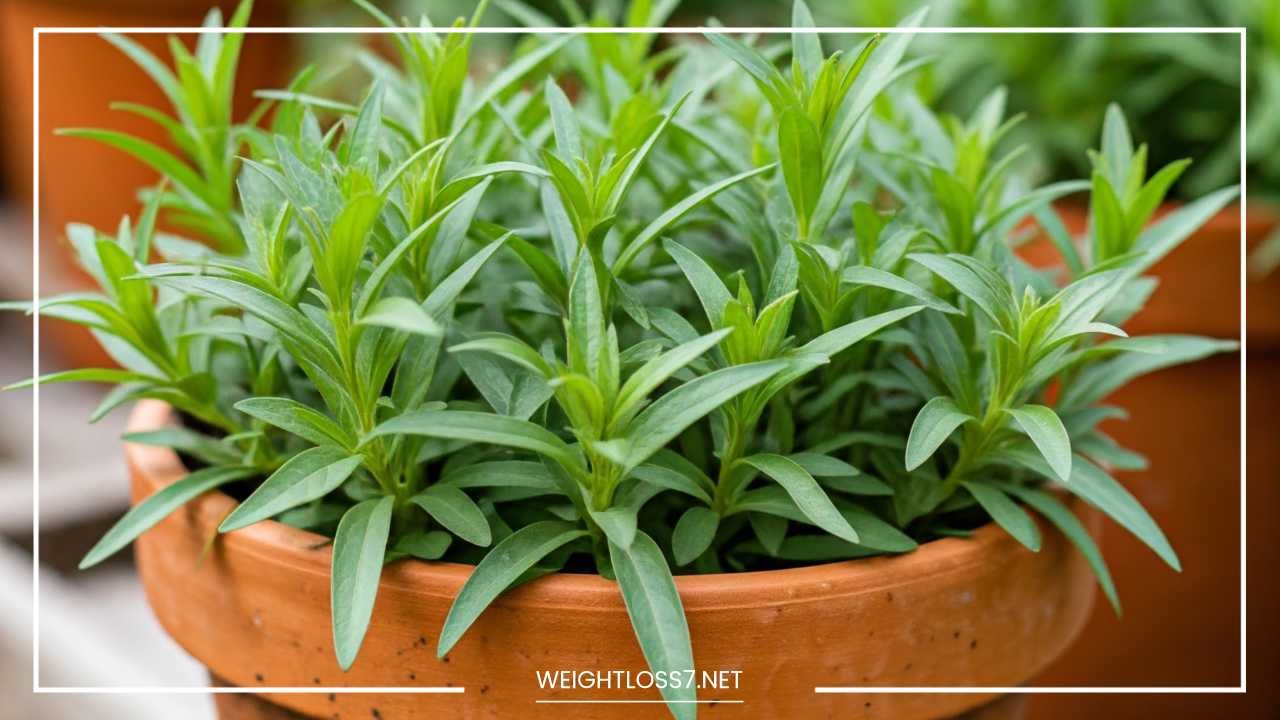Tarragon Uses and Health Benefits

Tarragon
Tarragon: A Fragrant Herb with Potential Health Benefits
Tarragon (Artemisia dracunculus) is a perennial herb renowned for its aromatic qualities and distinctive flavor profile.
With a history stretching back to ancient civilizations, this herb has been used not only as a culinary ingredient but also for its medicinal properties.
Native to Central Asia, tarragon has spread globally, enriching various cuisines and traditional medicines. This comprehensive exploration aims to delve into tarragon’s diverse culinary uses, its potential health benefits, and practical considerations for incorporating it into your daily life.
Culinary Uses of Tarragon
Tarragon’s unique flavor, characterized by its anise-like notes, makes it a versatile herb in many culinary traditions.
Its taste is often described as a blend of licorice and vanilla, which can enhance both savory and sweet dishes. Here’s an in-depth look at how tarragon is used across various culinary contexts:
French Cuisine
Tarragon holds a special place in French cuisine, where its flavor is highly prized. It is a cornerstone of several classic French dishes and preparations:
- Béarnaise Sauce: This iconic sauce, a rich, buttery condiment, is made with egg yolks, clarified butter, white wine or vinegar, and fresh tarragon. It is typically served with grilled meats, particularly steak, and provides a luxurious complement to the richness of the meat.
- Chicken Tarragon: In this dish, chicken is often cooked with a sauce made from cream, white wine, and tarragon, creating a flavorful and aromatic meal. The herb’s distinctive taste infuses the dish, making it a staple in French home cooking.
- Tarragon Vinegar: This flavored vinegar is made by infusing tarragon leaves in white wine or apple cider vinegar. The resulting condiment is used to add a unique flavor to dressings, marinades, and sauces, making it a versatile addition to many recipes.
Fish and Seafood
Tarragon pairs exceptionally well with fish and seafood, where its flavor enhances the natural taste of these delicate proteins:
- Sauces and Marinades: Tarragon is often used in sauces such as tarragon cream sauce or beurre blanc, which complement fish and shellfish dishes. Its subtle anise flavor adds depth without overwhelming the natural flavors of the seafood.
- Grilling and Pan-Searing: Tarragon can be incorporated into marinades or rubs for grilled or pan-seared fish, providing a fresh and aromatic touch. Its flavor infuses the fish, making it an excellent choice for light and healthy meals.
Poultry
Tarragon’s aromatic qualities make it a popular choice for poultry dishes:
- Roasted Chicken: Tarragon can be used to season roasted chicken, either by adding fresh leaves to the cavity or incorporating it into a herb butter or rub. The herb’s flavor permeates the meat, adding a fragrant note to the dish.
- Turkey and Duck: Tarragon can also be used in dishes involving turkey and duck. It pairs well with the rich flavors of these poultry types and is often included in stuffing or gravy.
Eggs
Tarragon’s flavor complements eggs in various preparations:
- Omelets and Scrambled Eggs: Fresh tarragon can be added to omelets and scrambled eggs, where it enhances the dish with a subtle herbaceous note. The herb’s flavor pairs well with other ingredients like cheese, mushrooms, or vegetables.
- Quiches: Tarragon can be incorporated into quiches, where it adds complexity to the filling. Its flavor blends well with ingredients like cream, cheese, and vegetables.
Vinegar
Tarragon vinegar is a popular condiment that adds a unique flavor to a variety of dishes:
- Salads and Dressings: Tarragon vinegar can be used to dress salads or in vinaigrettes, providing a tangy and herbaceous flavor. It can also be used to add a touch of sophistication to simple salads.
- Marinades: The vinegar can be used in marinades for meats and vegetables, where it imparts a delicate flavor and helps tenderize the ingredients.
Herbs de Provence
Tarragon is one of the key components of Herbs de Provence, a classic French herb blend:
- Seasoning Blend: Herbs de Provence typically includes thyme, rosemary, marjoram, and lavender, along with tarragon. This blend is used to season a variety of dishes, including roasted meats, vegetables, and bread, adding a fragrant and savory note.
Cocktails
Tarragon can also be used in mixology to create unique and aromatic cocktails:
- Infused Spirits: Tarragon can be used to infuse spirits such as gin or vodka, imparting a fresh and herbaceous flavor. This infused spirit can be used in various cocktails, offering a unique twist on classic recipes.
- Cocktail Garnishes: Fresh tarragon leaves can be used as a garnish for cocktails, adding visual appeal and a hint of flavor to the drink.
Potential Health Benefits of Tarragon
In addition to its culinary applications, tarragon has been recognized for its potential health benefits. Although further research is needed, preliminary studies and traditional uses suggest several advantages:
Anti-inflammatory Properties
Tarragon contains compounds that have been shown to possess anti-inflammatory properties:
- Eucalyptol and Flavonoids: Eucalyptol and flavonoids are among the key compounds in tarragon that contribute to its anti-inflammatory effects. These compounds may help reduce inflammation and provide relief from conditions such as arthritis or other inflammatory diseases.
Digestive Health
Tarragon has a long history of use in traditional medicine to aid digestion:
- Carminative Effects: Tarragon is believed to have carminative properties, which help relieve digestive discomfort such as bloating, gas, and indigestion. The herb may stimulate appetite and promote overall digestive health.
Antioxidant Activity
Tarragon is rich in antioxidants, which play a crucial role in protecting cells from oxidative stress:
- Polyphenols and Vitamin C: The herb contains polyphenols and vitamin C, both of which are powerful antioxidants. These compounds help neutralize free radicals and reduce oxidative damage, potentially lowering the risk of chronic diseases and supporting overall health.
Blood Sugar Control
Some studies suggest that tarragon may have a beneficial effect on blood sugar levels:
- Improved Insulin Sensitivity: Research has indicated that tarragon may help improve insulin sensitivity, which can be beneficial for managing blood sugar levels. This effect can be particularly important for individuals with diabetes or those at risk of developing diabetes.
Antimicrobial Properties
Tarragon contains essential oils and compounds with antimicrobial properties:
- Inhibition of Pathogens: Compounds such as carvone and eugenol found in tarragon may help inhibit the growth of harmful bacteria and fungi. These antimicrobial properties can support a healthy immune system and reduce the risk of infections.
Pain Relief
Traditional medicine has utilized tarragon for its potential pain-relieving effects:
- Analgesic Properties: Some studies suggest that tarragon may have analgesic properties, which can help alleviate pain associated with conditions such as headaches, muscle aches, or joint pain.
How to Use Tarragon
Tarragon can be used in various forms, each offering its unique benefits:
Fresh Tarragon
Fresh tarragon is preferred for its strong flavor and aromatic qualities:
- Preparation: To use fresh tarragon, gently wash the leaves in cold water and pat them dry. Add the leaves to dishes towards the end of cooking to preserve their delicate flavor. Fresh tarragon is ideal for garnishing salads, flavoring sauces, or incorporating into herb blends.
- Storage: Store fresh tarragon in the refrigerator, wrapped in a damp paper towel and placed in a plastic bag. It can also be grown at home in a herb garden or in pots, ensuring a fresh supply for culinary use.
Dried Tarragon
Dried tarragon is more concentrated in flavor compared to its fresh counterpart:
- Usage: When using dried tarragon, use about one-third of the amount called for when using fresh tarragon. Dried tarragon can be added to dishes during cooking to release its flavor.
- Storage: Store dried tarragon in an airtight container in a cool, dark place to maintain its potency. Proper storage helps preserve the herb’s flavor and aroma for extended periods.
Infusion
Tarragon can be steeped in hot water to create a flavorful infusion:
- Preparation: To make a tarragon infusion, steep a few fresh or dried tarragon leaves in hot water for several minutes. The resulting tea can be enjoyed on its own or used as a base for sauces, dressings, or marinades.
- Benefits: Tarragon tea may offer some of the herb’s potential health benefits and can be a soothing beverage, especially when consumed as part of a balanced diet.
Precautions and Considerations
While tarragon is generally safe for most people, it is important to be aware of potential precautions:
Allergic Reactions
Although rare, some individuals may experience an allergic reaction to tarragon:
- Symptoms: Allergic reactions may include itching, swelling, or difficulty breathing. If any adverse symptoms occur after consuming tarragon, discontinue use and consult a healthcare professional.
Pregnancy and Breastfeeding
Pregnant and breastfeeding women should exercise caution when using tarragon:
- Consultation: It is advisable to consult with a healthcare provider before using tarragon in large quantities during pregnancy or breastfeeding. While culinary amounts are generally considered safe, high doses or supplements should be avoided.
Interactions with Medications
Tarragon may interact with certain medications:
- Blood Thinners and Diabetes Medications: Tarragon may affect blood clotting and insulin sensitivity. If you are taking medications for blood thinning or diabetes, consult with your healthcare provider before using tarragon.
Essential Oils
Tarragon essential oil should be used with caution:
- Concentration: Essential oils are highly concentrated and can cause irritation or adverse reactions if not used properly. Always follow guidelines and consult with a healthcare professional when using essential oils.
Cultivation and Harvesting
Growing tarragon at home can be a rewarding experience, providing a fresh supply of this herb for culinary and medicinal uses:
Growing Conditions
Tarragon thrives in well-drained soil with plenty of sunlight:
- Soil: Choose a location with well-drained soil that is rich in organic matter. Tarragon prefers slightly acidic to neutral soil pH.
- Sunlight: The herb needs full sun to grow well. Ensure it receives at least six hours of sunlight per day.
Planting and Care
Tarragon can be grown from seeds, cuttings, or nursery plants:
- Planting: Space plants about 12 inches apart to allow for growth. Tarragon can be grown from seeds, but starting from cuttings or nursery plants may yield quicker results.
- Watering: Water the plants regularly, keeping the soil moist but not waterlogged. Allow the soil to dry out slightly between watering.
- Pruning: Prune tarragon plants to encourage bushy growth and prevent them from becoming too leggy. Remove any dead or damaged leaves to promote healthy growth.
Harvesting
Harvesting tarragon can be done throughout the growing season:
- Timing: Harvest leaves when the plant is actively growing, typically in late spring and summer. The best time to harvest is in the morning after the dew has dried but before the heat of the day.
- Method: Use clean, sharp scissors or pruning shears to cut the leaves. Avoid cutting more than one-third of the plant at a time to ensure continued growth.
Final Thoughts
Tarragon is a versatile herb with a rich history of use in both culinary and medicinal contexts. Its distinctive anise-like flavor enhances a variety of dishes, from classic French sauces to creative cocktails.
Beyond its culinary applications, tarragon offers potential health benefits, including anti-inflammatory, antioxidant, and antimicrobial properties.
Incorporating tarragon into your diet can provide both flavor and potential health advantages, making it a valuable addition to any kitchen and wellness regimen.
By understanding its diverse uses and benefits, as well as following proper precautions, you can fully appreciate the versatility and value of this aromatic herb.
Whether enjoyed fresh, dried, or as an infusion, tarragon’s unique qualities can contribute to a flavorful and healthful lifestyle.

















